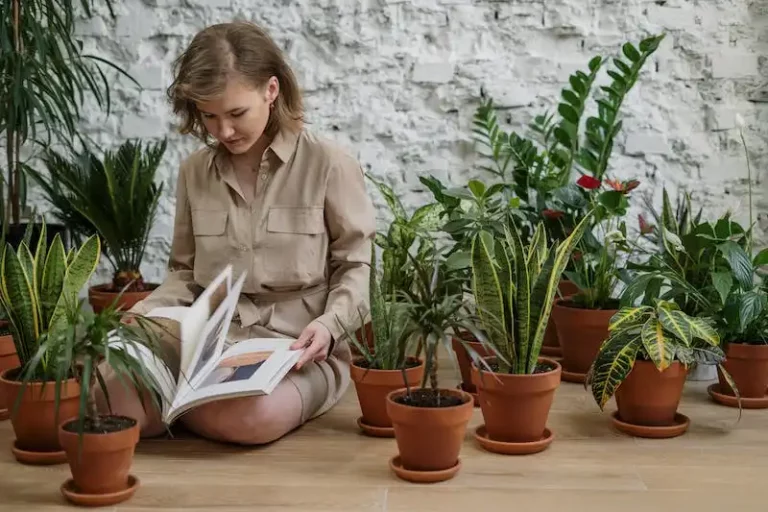The Broadleaf Lady Palm (Rhapis Excelsa) is a showy and elegant plant that can add a touch of beauty to any indoor or outdoor space. Native to the tropical regions of Southeast Asia, this plant is well-known for its lush fronds and its ability to thrive in various conditions.
When it comes to growing Rhapis Excelsa, it’s important to provide the right conditions. Like most tropical plants, they prefer bright, indirect sunlight and should be protected from direct sunlight. They also enjoy humidity, so misting their leaves regularly or placing them in a tray filled with water can help create the ideal environment. It’s also helpful to keep the temperature between 60-85°F (15-29°C), making them suitable for most homes.
Managing watering is key when it comes to caring for Rhapis Excelsa. They don’t like to be overwatered, so it’s important to allow the top inch of soil to dry out before watering again. During the winter, it’s best to reduce watering as the plant tends to go dormant. However, they do tend to find rootbound conditions tolerable, so repotting may not be necessary unless the roots are bursting out of the pot.
Propagation for Rhapis Excelsa can be done through various methods. One of the easiest ways is by dividing the plant’s rhizomes, which are underground stems that produce multiple shoots. Another option is to select some viable seeds and keep them in a moist seed-starting mixture. Once the seeds have sprouted, they can be moved to a better home. However, propagation can be a bit tricky, and it’s best to learn from a step-by-step guide or seek advice from a knowledgeable plant enthusiast.
Fertilizing the cultivated variety of Rhapis Excelsa can help them thrive. A balanced, slow-release fertilizer can be used every few months during the growing season to provide the necessary nutrients. However, be cautious not to over-fertilize, as it can lead to fertilizer burn. Additionally, it’s important to keep an eye out for any signs of infestation, such as small pests or discolored leaves. Regularly inspecting your plant and taking action if needed can help prevent any further damage.
There are several-fold varieties of the Broadleaf Lady Palm to choose from. One popular type is the Rhapis Excelsa ‘Nishiki’, which has variegated leaves with creamy white and green stripes. This particular variety can be a bit more challenging to grow, but with the right care, it can become a stunning addition to your collection. Whether you’re a beginner or an experienced gardener, Rhapis Excelsa is a fantastic plant to learn and grow, as it offers both beauty and a sense of accomplishment.
How to Grow and Care for Elegant Lady Palms
If you’re looking to add a touch of elegance to your indoor or outdoor space, look no further than the Rhapis Excelsa, commonly known as the Lady Palm. With its beautiful broadleaf foliage and delicate appearance, Lady Palms are sure to be a showstopper in any landscape.
The first thing to consider when planting Lady Palms is finding the right location. Lady Palms are versatile and can be grown in both full sun and shade, depending on the cultivar. However, they tend to do best in part sun or filtered shade, as direct sunlight can harm their delicate leaves.
When choosing a planting spot, opt for an area with well-draining soil. Lady Palms don’t like to be over-watered, so ensure that the soil can dry out between waterings to prevent root rot. Additionally, they prefer slightly acidic soil, so adding compost or peat moss to the planting hole can help create an ideal growing environment.
Once planted, Lady Palms don’t require much maintenance. They are relatively drought-tolerant and can survive periods of under-watering. However, it’s important not to over-fertilize them, as this can cause leaf burn and damage the plant. A slow-release fertilizer applied once a year should be sufficient to keep them healthy and vibrant.
Lady Palms are relatively pest-free, but they can occasionally be susceptible to infestations. If you notice any signs of pests, such as yellowing leaves or small holes in the foliage, it’s important to take action immediately. Treating the plant with an organic insecticide or using natural predators like ladybugs can help manage the infestation.
If you’re looking to propagate Lady Palms, you have a few options. They can be divided when they become overcrowded or grown from seed. Stem cuttings can also be taken, but they are less likely to root successfully. Regardless of the method you choose, it’s important to learn about the specific requirements for each propagation technique to ensure success.
Lady Palms are known for their elegant and showy flowers. However, it’s important to note that their flowers are rare in indoor settings. They tend to bloom outdoors in warmer climates, so if you’re looking to enjoy their beautiful flowers, consider planting them in a suitable outdoor location.
In conclusion, Lady Palms are a stunning addition to any indoor or outdoor space. With their elegant foliage and relatively low maintenance requirements, they are a popular choice for plant enthusiasts of all levels. By providing them with the right growing conditions, managing pests and diseases, and ensuring proper care, you can enjoy the beauty of Lady Palms for many years to come.
What You’ll Learn
- Types of cultivars and their specific needs
- Quick tips for growing Broadleaf Lady Palm
- Product recommendations for optimal growth
- Proper soil mixture and watering techniques
- Wiping and shaping the fronds
- Managing and preventing diseases
- The value of dividing the plant into multiple divisions
- Best fertilizing practices
- How to grow Broadleaf Lady Palm indoors
- Transplanting and repotting the palm
- Common FAQ answers about Broadleaf Lady Palm
- Tips for better growth in containers
- The elegance and beauty of Broadleaf Lady Palm
- Why under-watering can be harmful
- Reference guide for troubleshooting problems
- How to propagate the palm through divisions
- Tips for planting Broadleaf Lady Palm outdoors
- Information on diseases and pests that affect the palm
- Flowers and flowering potential of the Broadleaf Lady Palm
- Tips for managing the growth and shape of the palm
Cultivation and History
The Broadleaf Lady Palm, scientifically known as Rhapis Excelsa, is a popular palm plant that is commonly used in landscaping. Its history dates back to the 17th century in southern China and Taiwan. The plant was first discovered by Mary Elizabeth Cobb in 1890 during her travels to Japan, where she found a variation of the palm known as the Nanzan. She then brought the Nanzan palm back to the United States, which quickly gained popularity.
The Broadleaf Lady Palm is a slow-growing palm that can reach heights up to 12 feet tall, with a spread of about 8 feet. It has a clustered growth habit, with multiple stems growing from underground rhizomes. It is valued for its dark green, fan-shaped fronds that are waxy in texture. In addition to its attractive foliage, the Broadleaf Lady Palm is also known for its ability to withstand low light conditions, making it a popular choice for interior landscaping.
When it comes to cultivation, the Broadleaf Lady Palm is relatively easy to grow and care for. It prefers a well-draining soil mixture and can tolerate both full sun and partial shade. However, it should be protected from direct sunlight during the hottest part of the day to prevent leaf burn. Regular watering is essential, but be careful not to overwater, as this can cause root rot. During the winter months, the Broadleaf Lady Palm should be kept above 50°F (10°C) to prevent cold damage.
In terms of pests and diseases, the Broadleaf Lady Palm is generally quite resistant. However, it can attract insects such as spider mites and scale, which can be managed through regular inspection and treatment. Fertilizing the plant with a balanced fertilizer during the growing season can help promote healthy growth. Trimming off any yellowed or damaged fronds is also recommended to keep the plant looking neat and healthy.
Propagation of the Broadleaf Lady Palm can be done through division or by separating the offsets that grow from the rhizomes. This can be done during the spring or summer months. Transplanting is also a possibility, but it is recommended to do so when the plant is young, as older plants can have difficulty adjusting to a new location.
In conclusion, the Broadleaf Lady Palm, with its beautiful foliage and easy cultivation, is a popular choice for both indoor and outdoor landscaping. Its history, from its discovery by Mary Elizabeth Cobb to its widespread popularity today, is a testament to its value as a decorative plant. Whether you are a plant enthusiast or a beginner gardener, the Broadleaf Lady Palm is a versatile and attractive choice that you can’t go wrong with.
Propagation
Rhapis Excelsa, or the Broadleaf Lady Palm, can be propagated through division or seeds. Although growing from seed is possible, it is a slower process and requires patience.
Division is the easiest and most common method of propagating the Lady Palm. Divide the plant during the spring or summer months when the plant is actively growing. Carefully remove the plant from its pot and separate the rhizomes using a sharp, sterile knife. Each division should have several stems and a healthy root system. Transplant the divisions into new pots filled with well-draining soil. Keep the newly divided plants in a warm and humid environment until new growth appears.
If you decide to propagate through seed, make sure you obtain fresh and viable seeds. Collect the seeds from the flowers that have been pollinated and have started to turn brown. Soak the seeds in water for a few days to remove the flesh around them. Afterward, plant the seeds in a pot filled with well-draining soil. Cover the seeds lightly with soil and keep the soil moist. Germination can take several weeks to a few months, so be patient.
Propagation through division is the preferred method as it ensures that the new plants are true to the original variety. If you propagate through seed, keep in mind that the new plants may not be identical to the parent plant in terms of size, color, or overall appearance.
Regardless of the propagation method you choose, make sure to provide the necessary care for the young plants. Keep them in a warm and humid environment, and avoid over-watering or under-watering. With proper care and attention to their specific needs, the newly propagated Broadleaf Lady Palms will grow into healthy, showy plants.



